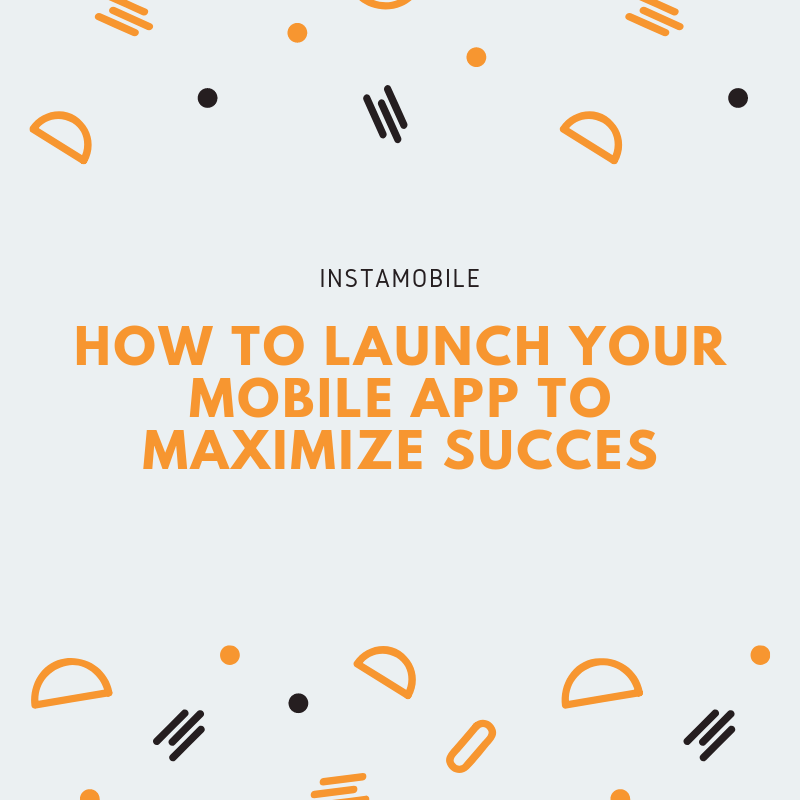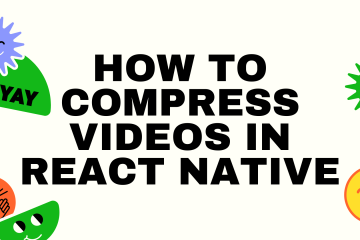Consider having to compete with only hundreds of apps in the App Store. It sounds like every app developer dream! Launching an app isn’t easy, but it’s probably not as hard as you think either. We’ve gathered these steps that you can follow in order to launch your app on your iOS and Android devices. Let’s see how to launch your mobile app correctly, in order to maximize your chances of success.
We’ll talk about ideation, design, development, marketing and much more. While some app developers will suggest they have the secret formula on how to launch an app successfully, the reality is no one can guarantee success. The app world is more competitive than ever and statistics show the most apps don’t generate much income.

As the number of apps in the market increase, the challenges for app marketers continue to grow. While some miraculous overnight successes will pop up every now and then, having a plan to market your app now is crucial to the success of every app.
Launching a mobile application can be quite an overwhelming process. You are excited and full of mixed emotions, even stress. This rollercoaster of emotions might drive you off track from the steps you needed to successfully launch a mobile application. Of course, launching your application comes after you have developed an application worthy of your targeted market.
You don’t need a big budget or a dedicated marketing team to market your app.
Just like product development itself, you don’t need a large marketing budget to guarantee a successful launch. Just as you can use one of our React Native Templates to bootstrap your mobile app development, you can also take a similar approach to marketing. These steps are designed for even the most affordable of budgets and will help not just with the acquisition, but with the entire spectrum: validation, testing, engagement, retention, referrals, and revenue.
We’ve classified these steps as pre-launch, launch, and post-launch. If your app is in its early stage, stretch out the pre-launch marketing over six months to better prepare your app for launch. If you’re ready to submit your app to the app stores next week, condense the most important elements of pre-launch into one week and move the other items to your post-launch roadmap.
Like everything else in life, there’s the right approach and a wrong approach to doing things. Sometimes mistakes early on in the process can be so devastating that it’s difficult to recover.
So…What can be done to increase the chances of your mobile app being a success?
Well, a few things. In this post, I will be sharing with you some steps on how to correctly and successfully launch your app. It’s my hope you’ll be able to steal these insights to increase your chances of launching your app. Let’s see how to launch your mobile app in order to maximize the odds of succeeding in the marketplace.
Know Your Target Market
The most important factor in launching a successful mobile app is that your app must solve a problem. Making thorough research on your audience demographics and frustrations is very important. Knowing exactly what your target audience need and want will help you to better understand how your product addresses their difficulties and fits into their day to day life. In addition, this will give you an overview of the dislikes about the apps that are currently available in the market, giving you the opportunity to tap into that loophole and outshine your competitors.
According to a recent study, 30% of the apps on app store don’t have a distinct purpose of creation, the reason being that the developers of such apps aren’t taking enough time to understand their audience. Look, don’t get me wrong. Users have a need or a problem, and your app should provide a lasting solution to the problem. However, it’s much easier if you have your target market clearly identified before you get started. You need to know how your app is going to make its users live better. This should be the driving force behind your app.
Here are the problems solved by some popular apps;
- Yahoo mail: solves the problem of staying in the know on your family’s lives, killing time, and connecting with friends
- INSTAGRAM does the same, but it’s more about pictures and instant communication. In recent time, INSTAGRAM has created a lot of online job opportunities where the seller uploads their products online for any potential buyer.
- MYNOTES, a to-do management app, helps you organize tasks, notes, and document.
- Mint, a mobile budgeting app, simple user interface and gives you a sense of control over your overall finances.
- Headspace, a meditation app, helps you get some “headspace” and build your meditation practice.
- Martial Spartan, a health fitness app, helps you get fit in all part of your body to go on with your daily life.
These apps share some things in common:
- Take note, the app isn’t the product. The real product you sell is the solution you provided to a problem. The app is just a means to solve the problem for as many users as possible.
- These app address the need primarily i.e. solution to a problem then desires and wants should be secondary.
In a nut-shell, if you don’t have a solid understanding of who your audience is, you can’t target users properly with your launch strategy. Making thorough research will ensure that you have a steady foundation for your app launch. only does these research address a specific need, but helps you validate your ideas before you build it, then build a low-tech prototype and test run it. If the result is successful, you can build the actual app. A ground-breaking app launch strategy is firmly rooted during pre-launch research taking to consider every aspect of the app’s branding, app store listing, to its social media exposure, content marketing incentives, press kit activities, all these must align with its target audience. Remember: the app is not the product, the solution is.
User Personas
A user persona is one of the most crucial tools in the app user experience (UX) design field. A benefit of user personas is each personal narrative keeps the team focused on a product outcome and prioritizes how the user will perceive that outcome. Detailed user personas will give answers to several questions to guide your launch efforts and put you on the right path for your entire app launch strategy.
- Who is this mobile app for?
- What is the problem users need a solution for?
- Why does this purpose need to be fulfilled?
- How is your app of value to its users?
- What types of activities does this audience engage with online?
- What tone and content style resonates well with this audience?
- Are there any visual branding patterns that surface amongst this audience’s online activity?
- What platforms are the best to leverage for paid advertising?
When you’re launching your app, don’t model your mobile app after companies like INSTAGRAM. The desire to launch an app as successful as INSTAGRAM is ok, but start small. Rome wasn’t built in a day. Here are few examples of more problems that you can find the solution to via your mobile app:
- Help people fall asleep faster, and get a good night’s rest, by making a sleep meditation app
- Help people achieve their financial goals faster, and smarter, by creating a budgeting app.
- Help people kill boredom, and get excited, by creating a positively addictive arcade game.
Remember, the user persona plays a critical role in how to launch your mobile app if you want to guarantee a successful outcome.
Marketing Your Mobile App
Marketing plays a critical role in how to launch your mobile app. It needs to be incorporated into the product itself. Growth is as important as the product itself, so why separate them?
A channel that a competitor doesn’t use, is a golden opportunity for you. Many app developers unconsciously focus all their energy on App Store Optimization when they launch, whilst there are several other marketing channels available to apps, which gives you the shot to approach their audience via different channels. To ensure that your app ranks prominently, you have to expand your web presence, identify the social networks popular with your target audience.
If your targeting factor is gender-specific, for example, market on those networks most popular with your ideal target gender. Once you know where your market is, register your accounts and start posting or sharing content related to your soon-to-be-launched app to build a following The first step of any go-to-market strategy is to give detailed answers to these questions:
- Who is your app intended for?
- What is the benefit your target audience will derive from your app?
- What makes your app better than your competitor’s?
Your app doesn’t need to be completed for you to start mobile marketing. Increase your social media presence, build hype, have beautiful screenshots and brand visuals, promote your app on blogs, engage your potential customers with different activities about your app even before its final release; that way they’ll be ready for it when it’s finally available. However, if you are launching your app as a startup, you’ve got to start creating brand awareness months before your app release. Just make sure that you’re promoting your app through the right channels that are most used by your target audience.
Other viable channels through which you can market your app: –
- Content marketing: – blogging about a theme that’s common in your app (productivity, sports, health, etcetera)
- Social media marketing: – sharing content from other sources (easy!) that might interest your app’s audience
- Email marketing: – sharing resources with your app’s customers via email, or boosting engagement by sending them emails about your app
- App Links, i.e. giving access to content from your app with an ordinary URL (check out mint.com for this)
- Create a preview video: – Creating a preview video for your app is very cogent as it gives potential customers a little insight of what your app is all about. Once you’re happy with your messaging strategy based on early social feedback, it’s time to put it to a format that can be easily digested and shared by the press and early customers alike. For many publishers, this means creating a preview video. App preview videos take your marketing to the next level by bringing your messaging to life. They can be embedded into your social media posts and even your app store product
The ideal preview video is 30 seconds to 2 minutes in length, clearly displays your app features, ads-on, and shows your app in action.
- Interact with a potential target audience in popular communities.
Between the forum boards, websites, and blogs, chances are you can find your existing online communities where your target audience is dominant. Spend some time on the social network to discover a few of these communities and join the discussion.
Participating in these groups is a great way to understand what your target audience is talking about. What are their needs? What are their pain points? plug your app in relevant discussions, and explore promotional partnerships and affiliate opportunities between your app and that community.
- Test run your app
With a feedback loop in place, it’s now time to test-run a near-final version of your app available only to a selected few. The goal of a test-run is to work out last-minute glitches before it final launch. For most apps, the pre-launch prototype (sometimes preceded by an alpha test at an earlier development stage) is given to some specific individuals outside of the developers’ circle to give the app a real-world market validation. Use this as an opportunity to crowdsource quality assurance and ensure a relatively bug-free experience once you release your public app.
App Store Optimization
A proper App store optimization is one of the important ingredients of the success of your app. Optimization basically has to do with how well ranked your app is on both iOS App Store and Google Play Store. Experts recommend these important keys to rank well in both stores. First of all for the name of the mobile app you are recommended to use habitual search terms to increase discoverability. Secondly, the keywords. Take your time to select the right keywords. Then the visuals & branding for the app, the percentage of positive reviews the app generates and lastly the description of the app; here, get 2-3 lines to trap the user in your app charisma so they want to know more about your app. Use them wisely.
According to Statistical, keywords in the app name have the biggest impact on app store search rankings. Strategically place keywords throughout your listing and description so you show up when users search for those words.
The study showed that keywords being used for the title offered a 30.3% increase in the chances of the app ranking among the top apps. The study found that 65% of iOS users and 85% of Android users located their apps by browsing an app store.
Here’s why this is important: Whenever a user is on an app store, the user is going to be met with a listing that showcases your app. So, it’s important to create compelling visuals.
Another thing to do is to optimize your description of your product page. Put careful consideration into how you’ll make your product description to persuade potential users to download your app. In the App Store, for example, users only see the first five lines of your description at first glance, unless they click through to read more. This means you want to arouse interest in the first few lines of the description.
Get your users excited about downloading and using the app. The higher your app ranks, the more perceptible it is to potential users. This also increases the possibility of app store editors noticing your app, increasing the chances of your app getting featured in whichever store you submit too. Stores with an excellent reputation is a great way to boost your app marketing and promotion efforts.
Remember, every successful app has one thing in common and that is to solve the users’ problems. Make sure this is clear in the description of your app. Mention key features in the description as well, and let users discover the rest of the app after they’ve downloaded it.
After you’ve outlined all your launch campaigns, outline what resources you’ll need. Your audience will gather information from different sources, which means that you need to modify your messaging to optimize the efficiency of each outlet. Planning your marketing strategy ahead of time is just as important as getting the product ready. Continue to add to your performance dashboard. Ensure a smooth mobile app launch by thoroughly reading the submission guidelines for whichever app store(s) you plan to submit your app.
Use of Competitors Reviews
Earlier I talked about analyzing your competition. There are other apps out there that are similar to yours. After your app is officially released, it’s a possibility that someone will try to replicate your idea. The best way to stand out is by coming up with better ways to make yourself different.
If someone steals your idea, it’s going to be quite difficult for you to prosecute. So don’t even try. Instead, try to come out hard and come out hard. Don’t make your content easy for people to steal, remake, and pass it off as their own. Having a strong brand name for your app makes it more difficult for someone to do this. That’s why your pre-launch marketing strategy is so important.
Check out your app’s competitors. A smart plan for building a great app is researching your app’s competitors. It’s quite simple: find competitors, find out what they’re doing well and poorly, copy the great aspect and make improvements to the bad ones. You don’t want to launch in isolation and hope for the best. Check out your competitors, and find a way to stand out before you launch. You can do that by reading your competitor’s reviews to finding the negative and unpleasant experiences their customers had, and improve on those same points in your app. Once you know, you can make a better app. If you’re stuck for more ideas, “mine” your competitor’s reviews for ideas also by finding marketing channels your competitors are not using. Let’s say you found a journaling app in the App Store. When you go to their website or app landing page, you see that they don’t have a blog. Chances are they’re not using content marketing as a marketing channel, and that’s an opportunity for you. The same goes for social media marketing, a YouTube channel.
You should also read app reviews by the app users. Don’t just read the 1-2 star reviews, but read some of the 5-star reviews too. App users that give a good review are likely to give you more ideas on how to improve the app they already love. Negative 1-star reviews most times tend to be hastily written and can be less reliable. Keep in mind that people who’ve had a negative experience in an app, are more likely to leave a review.
Combine your competitor research with keyword research. With the help of Google, you can find out if an app feature is often requested, mentioned or complained about. Consider adding those desirable features to your app to improve it.
Final Thoughts
First impressions are important. You don’t want your name and brand associated with any problems. Getting it right the first time around will save you headaches and also keep you from having to go through a rebranding strategy to restore the image of your app. But with all of that in mind, there are a lot of apps out there that have successfully launched and continue to prosper years after their establishment. There’s nothing wrong with taking advice from those people who succeeded before you. In fact, I encourage it. That’s the motivation behind this guide.
You can skip a lot of these steps by starting with a React Native template.
I can’t stress this enough. Don’t waste a lot of money on mobile development! There are plenty of React Native apps that are already fully functional, ready to be used. Don’t reinvent the wheel.
WISH YOU LUCK AS YOU PLAN YOUR APP LAUNCH!
Next Steps
Now that you have learned about resources to learn React Native development, here are some other topics you can look into
- Firebase — Push notifications | Firebase storage
- How To in React Native — WebView | Gradient| Camera| Adding GIF| Google Maps | Redux | Debugging |
Hooks| Dark mode | Deep-link | GraphQL | AsyncStorage | Offline |Chart | Walkthrough | Geolocation | Tinder swipe | App icon | REST API - Payments — Apple Pay | Stripe
- Authentication — Google Login| Facebook login | Phone Auth |
- Best Resource – App idea | Podcast | Newsletter| App template
If you need a base to start your next React Native app, you can make your next awesome app using many React Native template.


